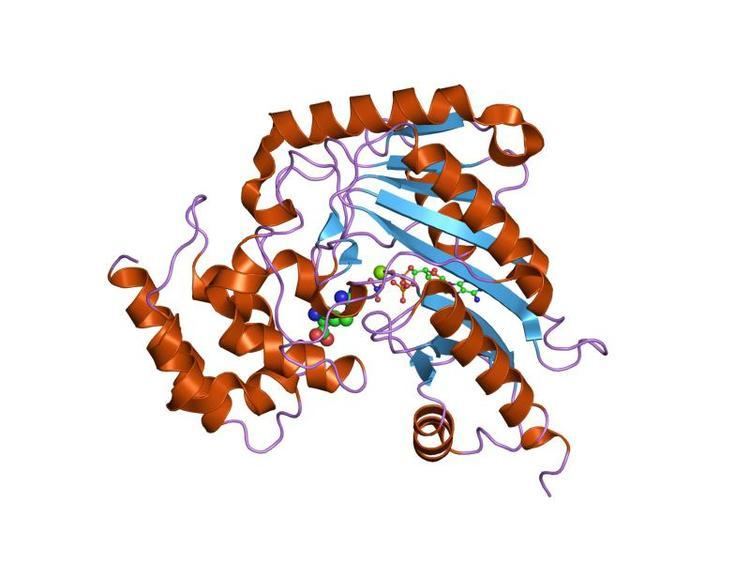Symbol ATP-gua_Ptrans Pfam clan CL0286 PROSITE PDOC00103 | Pfam PF00217 InterPro IPR022414 SCOP 1crk | |
 | ||
In molecular biology, the ATP:guanido phosphotransferase family is a family of structurally and functionally related enzymes, that reversibly catalyse the transfer of phosphate between ATP and various phosphogens. The enzymes belonging to this family include:
Creatine kinase plays an important role in energy metabolism of vertebrates. There are at least four different, but very closely related, forms of CK. Two isozymes, M (muscle) and B (brain), are cytosolic, while the other two are mitochondrial. In sea urchins there is a flagellar isozyme, which consists of the triplication of a CK-domain. A cysteine residue is implicated in the catalytic activity of these enzymes and the region around this active site residue is highly conserved.
ATP:guanido phosphotransferases contain a C-terminal catalytic domain which consists of a duplication where the common core consists of two beta-alpha-beta2-alpha repeats. The substrate binding site is located in the cleft between N and C-terminal domains, but most of the catalytic residues are found in the larger C-terminal domain. They also contain an N-terminal domain which has an all-alpha fold consisting of an irregular array of 6 short helices.
